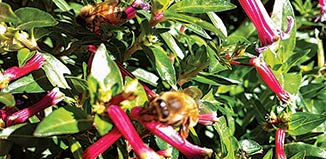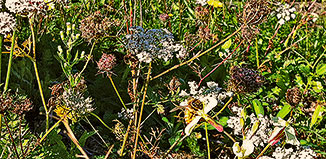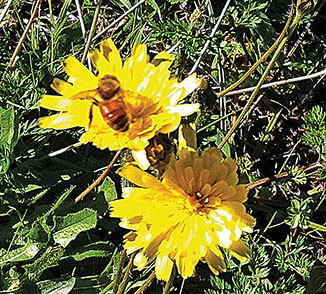
In recognition of the importance of bees to our lives we are starting a regular column by bee keeper Penny Kerr-Hislop. She will provide readers with a month by month account of what’s cooking down in the hive
Autumn in the Kapiti Horowhenua: Drones begone! — You gotta get outa this hive
This month has seen enough rain to bring relief to many pastures and gardens but has been accompanied by cooler temperatures, a very noticeable shortening of days and a significant reduction in number of flowers. Clover has stopped producing. The local seasonal drought that we experienced through February and March has reduced and impacted on the flowering of local weed species that are normally a good source of autumn nectar for bees. For example, cats ear.

In town, garden ornamentals will still be flowering and providing a good source of nectar. A great plant to have in your garden at this time of year is the “cigarette plant” (Cuphea ignea). It provides a wonderful source of nectar for both bumble and honey bees. If you look closely at the flowers on this plant you will see a little hole at the end of the flower nearest the stalk. The bees chew a wee hole so they can access the nectar. Their tongues are too short otherwise to reach to the stamens at the base of the flower. The bees, being a friendly and companionable lot, share the holes.
In the hive, the change in temperature and the reduction in nectar flow means that the drones are being evicted and left to die outside the hives. They are only consumers and don’t produce any honey therefore, the bees need to act to protect their honey reserves to get them though the winter. Getting ready for survival mode, the queen slows her laying down and the hive begins to slowly shrink in numbers for winter.
The hive may be slowing down but human work continues: Check the queen is still functioning, check there are plenty of frames of honey — at least 8 frames spread over two boxes of bees. You may still have to feed sugar during winter.

Consider reducing the entrance to prevent wasp and mice invasions. Check that all the wood work is draft proof and secure. If you have a problem with wasps, you’ll need to locate the nest and deal to it.
If you haven’t already, now is the time to put your varroa treatment in place. As always, every time you check your hive, keep an eye open for disease, especially American foul brood. If you are not sure what this looks like, seek out an experienced beekeeper. Our local beekeeping club (the Buzz Club) in Otaki, is always a good starting point for help. Contact Rusty Barrett, Chairman Ph: 06 362 6950

